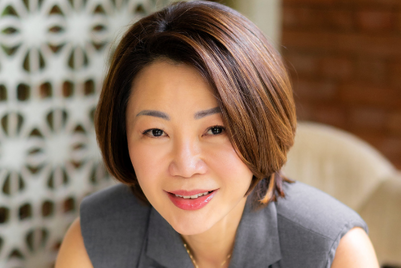
But acquiring the broadcasting rights to the World Cup doesn't come cheap. Precise figures are unavailable, but CCTV is said to have paid in excess of the US$292.7 million it shelled out for coverage of the 2002 tournament. Asian broadcasters such as iCable in Hong Kong and SingTel and Starhub in Singapore, are hoping to see a considerable return on their investment in terms of advertising revenue and, in some cases, subscription numbers.
"Cable/satellite operators see the World Cup as a major opportunity to drive new subscribers and take market share," says Marcus Luer, Group CEO, Total Sports Asia. "It is killer content."
It is not only the traditional broadcasters that are offering brands the opportunity to connect with fans. In China, Youku.com has secured the rights to broadcast all matches and all FIFA-related programmes to be aired on CCTV.
"Online broadcasting works well when events are aired during office hours or during odd times, as it allows office workers to still follow it in some form," adds Luer. "The majority of the World Cup matches are played very late at night Asian time, which means delayed online coverage could cater to people who can't afford staying up all night and don't have access to re-plays. With the ever growing online penetration and bigger bandwidth in China, online deals are more and more valuable to the rights holders."
The smart brands will run integrated campaigns to reach consumers, but with myriad brands - both official and unofficial - trying to leverage the tournament, gaining cut-through could be especially arduous.
Research from MEC, found that Coca-Cola and adidas are consistently the most often mentioned sponsors in terms of spontaneous sponsor awareness. This can be partly attributed to the longevity of their sponsorships and relationships with the World Cup and FIFA. While Coke's activity has centred on goal celebrations and the feel-good factor, adidas' strategy has been built around the teams it produces kit for. Supporting the Japanese team, adidas and TBWA/Hakuhodo created a massive mural/comic book project called Sky Comic. Thirteen huge murals were created in 13 Japanese cities. Used in promotional activities, the Sky Comic stands out from the raft of football-related advertising clutter.
Of the Asian brands sponsoring the tournament, Sony (a first-time sponsor of the World Cup but a UEFA Champions League sponsor since 2006) is making an impression in China and Thailand where it is ranked fifth and third respectively in consumer recognition.
Hyundai, the official automobile partner, has global above-the-line advertising, as well as a major tailored campaign in Korea. The popular boy band Big Bang is recording an unofficial team anthem that the brand hopes will galvanise public support for the team and win it a place in the hearts and minds of consumers.
Two other Asian brands sponsoring the World Cup are Yingli Solar, the Chinese energy company, and Mahindra Satyam, an Indian IT consultant service. They hope sponsorship will entertain potential and existing clients and showcase their services. Yingli is keen to provide its energy savings system to other venues and being an official FIFA partner buys the brand worldwide credibility.
Industry comments
 Marcus Luer, group CEO at Total Sports Asia:
Marcus Luer, group CEO at Total Sports Asia:"For a terrestrial broadcaster, the benefit is airtime and sponsorship sales. Owning such a major event also creates bragging rights, which create a positive image of the network and a trickle down effect on other programming slots.
Sponsors like Coca-Cola, VISA, Sony, Hyundai and adidas have activation campaigns across Asia, which I'm sure will increase short term sales and will justify the investment, but few of them have shown much creativity."
.jpg) Malcolm Hanlon, managing partner at Zenith Optimedia:
Malcolm Hanlon, managing partner at Zenith Optimedia:"The World Cup will be the biggest international sporting viewership event in Asia this year. There seems to be even more anticipation for the World Cup than for the Olympics, certainly for the Southeast Asia markets.
I believe that with World Cup demand for airtime, coupled with an economic backdrop where media spending is definitely picking up, those broadcasters that have acquired the rights will make gains."
According to a recent poll on Media, the majority of readers thought adidas would benfit the most from its sponsorship of the event, followed by Coca-Cola.
Got a view?
Email [email protected]
This article was originally published in the 3 June 2010 issue of Media.


.jpg&h=334&w=500&q=100&v=20250320&c=1)
.jpg&h=334&w=500&q=100&v=20250320&c=1)
.jpg&h=334&w=500&q=100&v=20250320&c=1)



.png&h=334&w=500&q=100&v=20250320&c=1)

.png&h=334&w=500&q=100&v=20250320&c=1)


+(6).jpg&h=268&w=401&q=100&v=20250320&c=1)





